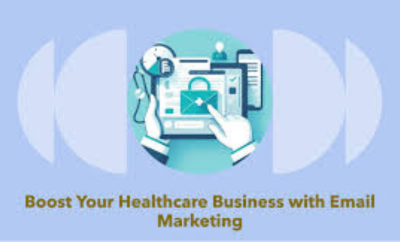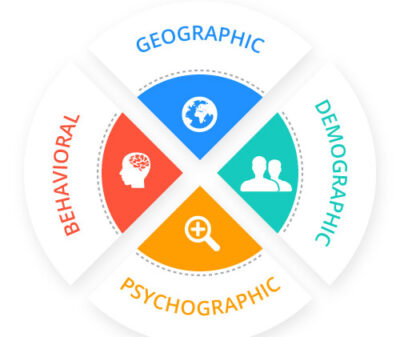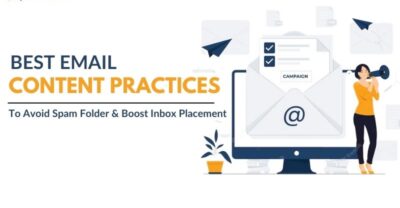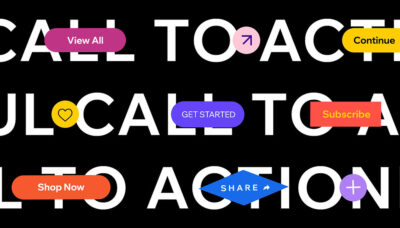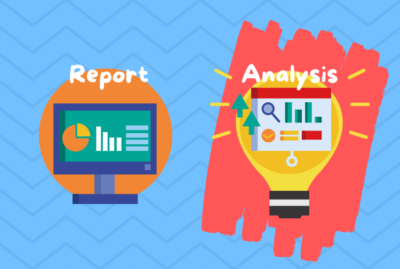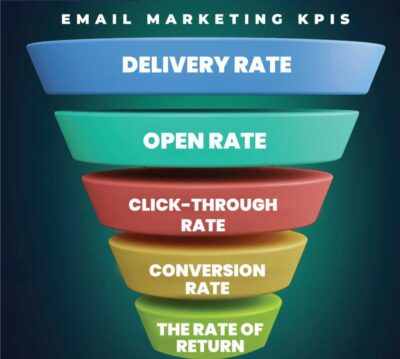Table of Contents
Email marketing in healthcare can be very effective because of how important it is to keep in touch with your patients and clients. One of the most effective ways to do that is through email marketing. By sending regular emails to your patients, you can keep them informed about your services, educate them about health topics, and remind them to schedule appointments.
Email marketing is a powerful tool that can help you build relationships with your patients and grow your practice. With the right strategy, you can use email campaigns to increase patient engagement, improve patient outcomes, and boost your bottom line. Whether you’re a hospital, a clinic, or a private practice, email marketing can help you connect with your patients meaningfully.
In this article, we’ll explore the benefits of email marketing in healthcare marketing and provide tips and best practices for creating effective email campaigns. We’ll cover everything from building your email list to crafting compelling subject lines and calls to action. By the end of this article, you’ll better understand how email marketing can help your healthcare organization thrive.
1. Understanding Email Marketing in Healthcare
Email marketing is a highly effective way for healthcare providers to communicate with their patients, but it comes with unique challenges and considerations. In this section, we’ll explore some of the key factors to keep in mind when using email marketing in the healthcare industry.
Regulatory Compliance
When it comes to email marketing in healthcare, regulatory compliance is essential. Healthcare providers must comply with a range of laws and regulations, including HIPAA, which governs the privacy and security of patient information. It’s important to ensure that your email marketing campaigns are designed to meet these regulatory requirements.
One way to ensure compliance is to use email marketing software specifically designed for the healthcare industry. These platforms often include built-in features, such as secure messaging and encryption, to help you stay compliant.
Data Privacy and Security
Data privacy and security are also critical considerations in healthcare email marketing. Patients trust their healthcare providers to keep their personal information safe, and email marketing campaigns must be designed with this in mind.
To ensure data privacy and security, it’s important to use email marketing software designed to protect patient information. This may include features such as encryption, two-factor authentication, and secure messaging.
Target Audience Analysis
Finally, on challenges and considerations, it’s important to thoroughly analyse your target audience when designing email marketing campaigns for the healthcare industry. This includes understanding your patients’ needs and preferences, as well as any regulatory or legal requirements that may impact your campaigns.
One way to conduct target audience analysis is to use patient surveys or focus groups to gather feedback on your email marketing campaigns. This can help you identify areas for improvement and ensure that your campaigns meet your patients’ needs.
By keeping these key considerations in mind, healthcare providers can create effective email marketing campaigns that engage patients and promote better health outcomes.
2. Strategic Planning for Email Campaigns
Email marketing is an effective way for healthcare providers to communicate with patients, build relationships, and promote services. However, creating a successful email campaign requires strategic planning. In this section, we’ll cover some essential components of strategic planning for email campaigns in the healthcare industry.
Goal Setting
Before launching an email campaign, it’s important to define your goals. What do you want to achieve with your email marketing efforts? Some common goals for healthcare email campaigns include increasing patient engagement, promoting services, and driving website traffic.
Once you’ve defined your goals, you can create a plan to achieve them. For example, if your goal is to increase patient engagement, you might send out a monthly newsletter with relevant health information, tips, and resources.
Content Personalization
Personalization is key to effective email marketing. Patients are more likely to engage with emails that are tailored to their interests and needs. In fact, personalized emails have been shown to have higher open and click-through rates than generic emails.
You can personalize your emails using patient data such as demographics, health history, and interests. For example, if you have a patient who has recently been diagnosed with diabetes, you might send them emails with information about managing their condition.
Segmentation Strategies
Segmentation is the process of dividing your email list into smaller groups based on specific criteria. By segmenting your list, you can send targeted emails to specific groups of patients. This can improve engagement and increase the effectiveness of your email campaigns.
Some standard segmentation criteria for healthcare email campaigns include age, gender, location, health condition, and interests. For example, you might send emails about women’s health to female patients over 40.
3. Best Practices for Email Content
When it comes to email content, it is important to keep your audience engaged and interested. Here are some best practices for creating effective email content for the healthcare industry.
Educational Material
One effective way to engage your audience is by providing educational material. This can include informative articles, videos, or infographics that educate your audience on relevant healthcare topics. By providing valuable information, you can establish your brand as a trusted source of information and build credibility with your audience.
Engagement Techniques
Engaging your audience is key to keeping them interested in your emails. One effective way to do this is by using interactive elements such as polls, quizzes, or surveys. This keeps your audience engaged and provides valuable feedback that can help you improve your marketing efforts.
Another effective engagement technique is personalization. Personalizing your emails with the recipient’s name and other relevant information can make them feel more personal and increase the likelihood of being read.
Call-to-Action Elements
Finally, it is important to include clear and compelling call-to-action (CTA) elements in your emails. This can consist of buttons or links encouraging your audience to take a specific action, such as scheduling an appointment or signing up for a newsletter. Ensure your CTAs are prominently displayed and easily understood to maximize their effectiveness.
By following these best practices for email content, you can create engaging and effective email campaigns that resonate with your audience and drive results for your healthcare brand.
4. Email Marketing Tools and Software
When it comes to email marketing, choosing the right tools and software can make all the difference. Here are some of the top tools and software options for the healthcare industry:
Automation Platforms
Automation platforms can help you streamline your email marketing process and save time. Some popular options include:
- Mailchimp: Mailchimp is a popular email marketing platform that offers a wide range of features, including automation. With Mailchimp, you can set up automated emails based on triggers such as sign-ups, clicks, and purchases. The platform also offers advanced reporting and analytics features.
- Constant Contact: Constant Contact is another popular email marketing platform that offers automation features. With Constant Contact, you can set up automated emails based on triggers such as sign-ups, birthdays, and anniversaries. The platform also offers a wide range of templates and design tools.
- HubSpot: HubSpot is a comprehensive marketing platform that offers automation features for email marketing as well as other marketing channels. With HubSpot, you can set up automated emails based on triggers such as website visits, form submissions, etc. The platform also offers advanced analytics and reporting features.
Analytics and Reporting
Analytics and reporting tools can help you track the performance of your email campaigns and make data-driven decisions. Here are some popular options:
- Google Analytics: Google Analytics is a powerful analytics tool that can help you track the performance of your email campaigns. With Google Analytics, you can track metrics such as open rates, click-through rates, and conversion rates. You can also set up goals and track the performance of your campaigns over time.
- Litmus: Litmus is an email testing and analytics platform that can help you optimize your email campaigns. With Litmus, you can test your emails across different devices and email clients, and track metrics such as open rates and click-through rates. The platform also offers advanced analytics features such as heat maps and engagement reports.
- Campaign Monitor: Campaign Monitor is an email marketing platform that offers advanced reporting and analytics features. It allows you to track metrics such as open rates, click-through rates, and conversion rates. The platform also offers advanced segmentation and personalization features to help you target your campaigns more effectively.
Choosing the right email marketing tools and software can help you optimize your campaigns and achieve better results. Consider your specific needs and goals when selecting a platform, and be sure to take advantage of the features and tools that are available to you.
5. Measuring Success and ROI
Email marketing is an effective way to reach out to potential and current patients in the healthcare industry. However, it is important to measure the success of your email campaigns to ensure that they are effective in achieving your goals. In this section, we will discuss some key performance indicators, A/B testing, and feedback and surveys that can help you measure the success of your email marketing campaigns.
Key Performance Indicators
Key performance indicators (KPIs) are metrics that help you measure the success of your email marketing campaigns. Some KPIs that you should consider tracking include:
- Open rate: The percentage of recipients who opened your email.
- Click-through rate: The percentage of recipients who clicked on a link in your email.
- Conversion rate: The percentage of recipients who completed a desired action, such as filling out a form or making an appointment.
- Unsubscribe rate: The percentage of recipients who unsubscribed from your email list.
By tracking these KPIs, you can get a better understanding of how your email campaigns are performing and make adjustments as needed.
A/B Testing
A/B testing is a method of comparing two versions of an email to see which one performs better. You can test different elements of your email, such as the subject line, content, or call-to-action, to see which version results in higher open and click-through rates. By using A/B testing, you can optimize your email campaigns for better results.
Feedback and Surveys
Feedback and surveys can provide valuable insights into how your audience receives your email campaigns. You can ask for feedback through a survey or by including a feedback form in your email. This can help you identify areas for improvement and make adjustments to your email campaigns to meet your audience’s needs better.
In conclusion, email marketing isn’t just a tool; it’s a lifeline for fostering healthier communities, driving positive health outcomes and a game changer to your marketing strategy. It empowers providers to engage patients on a personal level, building trust and loyalty while delivering timely reminders, valuable insights, and exclusive offers. With its ability to target specific audiences and ensure compliance




